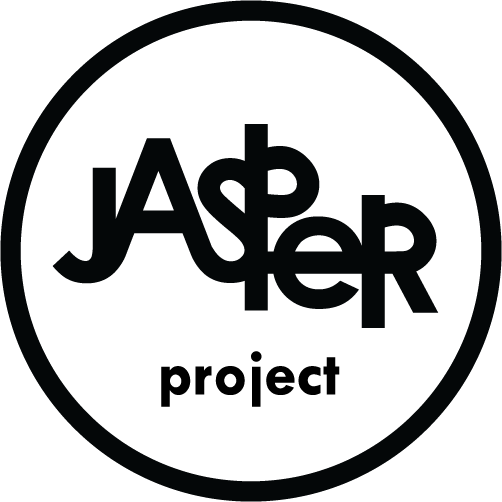by Liz Stalker
There are still a little over two weeks left to check out Gerard Erley’s breathtaking show, “Sights Unseen,” at the Koger Center’s Gallery! This exhibition, which ends on Sunday, March 9th, features Erley’s stunning landscapes in oil paint, which employ inventive use of light and bold color so effectively that to witness them is a nearly spiritual experience. Jasper was lucky enough to interview Erley, whose responses to our questions were so insightful that they demanded to be presented as written.
Jasper: When and how did you get started as an artist?
Erley: I was drawing (scribbling?) before I could walk. Soon I was imitating the forms my eyes took in - trees, buildings, people. I feel (from where I stand today) that I had a compulsion to explore the world around me through the process of drawing. I came to know the physical nature of things through this process, and was soon aware of the emotional impact these images could have when translated into an artistic form. My precocious skills were noted and rewarded in school from kindergarten on. I believe my path as an artist was set at that point.
Jasper: What draws you to oil painting as a medium?
Erley: The majority of art images I saw reproduced as a kid were oil paintings. The medium survived the test of time for good reason. The quality and variety of the paintings attest to that. The quality was expressed in the exquisite craft and power of the artworks which amazed and delighted me. This instilled in me a strong reverence for art history, and I delved into the books I found in the library like a pig rooting for truffles.
Regarding the variety of the medium, oil paint can be slathered on the canvas in emotional outbursts or built up in painstaking layers in a search to express the inexpressible. It seemed every physical texture could be mimicked. At the same time oil painting could hint at something far beyond the perceivable.
Jasper: The use of light in your work has a huge impact on the tone--is there anything in particular you consider when deciding the role that light will play in your pieces?
Erley: I once was concerned mainly with the forms that light revealed, how light could sculpt objects, pulling them out of space. I have since come to know light itself as my true subject. I am particularly intrigued by light's duality - how it can both reveal and obscure form. It washes over all and becomes the main actor on the stage of my canvas. I am especially drawn to light that is transitional and fleeting - the pulsing warmth of sunset, the mysterious coolness of moonlight, the shafting radiance through a clouded sky. I employ these various types of light to express my changing emotions. Nature offers a vocabulary of visual equivalents which I use to express these sentiments.
Jasper: Your website states that you prefer to paint "from memory and intuition" as opposed to using photo reference. Why do you feel this way? And how do you think this might impact the concept of "realism," thinking of "realism" as both an art style and a reflection of reality?
Erley: A lot of artists are enslaved by photo images. They think what is shown is reality. But this so-called reality is predigested. The camera has determined the composition and the range of values and color. Things are distorted through the lens.
One antidote is the option of painting from life, experiencing nature firsthand in all its glorious variety. This is a wonderful way to learn the vocabulary of art without imposing filters. Having followed this approach for a number of years, I found myself disillusioned with the process. Although I could produce a reasonable imitation of nature, there was a certain depth I felt lacking. One can get lost in all the details of the natural world and be unable to see the forest for the trees, so to speak. To quote Pierre Bonnard, “It’s not a matter of painting life, it’s a matter of giving life to painting.”
I felt the need to engage another part of myself in the process of art making. Therefore, I chose to work largely intuitively in the studio. And while I incorporate memory, it is never a one-to-one relationship ("I saw that, so I’ll paint that”). It is a loose recollection of various visual impressions. In the end, I believe the inner, emotional life has as much, if not more, validity than the purely perceptual. For me, that is where true reality resides.
Jasper: You mention poetry several times in your artist statement--if you had to pair a piece from this exhibition with a poet, who might you choose?
Erley: I am referring to a visual poetry rather than a literary one. But seeking an equivalent in the realm of words, perhaps Ralph Waldo Emerson fits the bill. He says so much with so little. For him, the divine can be found in the everyday. My hope is that my paintings too point to something greater than the merely observable, taking you to a place more felt than seen.
Be sure to stop by the Koger Center by March 9th to see Erley’s work for yourself! You certainly won’t regret it.

